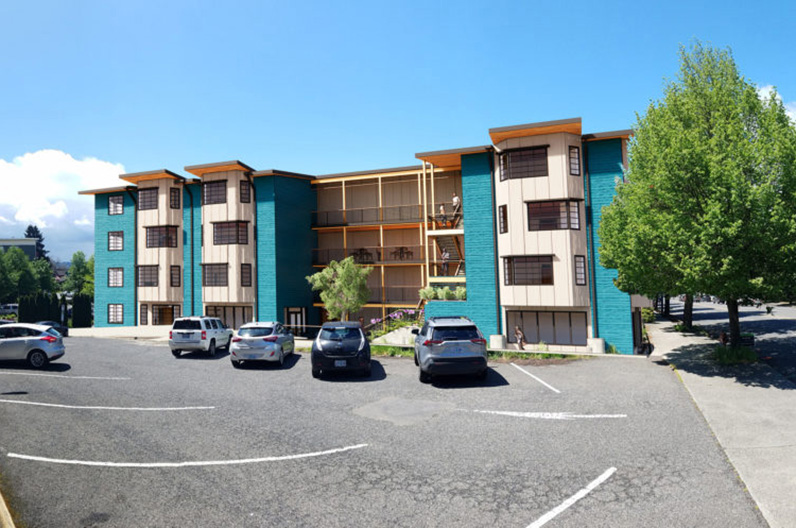The American Hospital Association recently hosted the rural health care leadership conference in Orlando, Florida. Catholic Health World Associate editor Valerie Schremp Hahn attended and shares some key takeaways.

1. Rural hospitals are at a tipping point. Rural hospitals are closing services and some hospitals are closing altogether. More than half of rural hospitals do not offer labor and delivery service, said Jamie Orlikoff, an author, consultant and the national adviser on governance and leadership to the American Hospital Assocation. Orlikoff encourages facilities to use technology and artificial intelligence to increase productivity and reduce burnout, and to recruit strong, aggressive board members from outside the community.

2. Health care facilities, no matter how small, are not immune to cyberattacks. Ransomware attacks are up 278% since 2020, according to the Department of Health and Human Services' Office for Civil Rights, and health care is the most attacked sector, according to the FBI. Only 8% of stolen health care information comes from electronic medical records, the rest comes from networks and third-party providers. When hospitals contract with third-party providers, they should make sure those providers have cybersecurity guards in place. "You're not immune from it," said Chris Logan, vice president of cybersecurity software company Censinet. "You're gonna get hit." How much hospitals are prepared and how they respond will help their situation, he said.

3. Big businesses in rural communities can become health partners. Mohamed Diab, CEO of CVS pharmacy's Accountable Care, explained how his company partners with more than 200 health systems and 60,000 clinicians in value-based care contracts that cover more than 1 million patients on Medicare. Albert Wu is the chief medical officer of Dollar General, which operates 10 times as many stores as there are rural hospitals. He said the company plans to have fresh produce in half of its stores within the next few years and has added more shelf-stable items like canned proteins and frozen fruit and vegetables. The stores also have opened up their parking lots for use as vaccination sites and are looking for other partners to serve the health needs of their customers.

4. Rural hospitals and patients are just as vulnerable if not more to the effects of climate change. Challenges in rural health care include deferred maintenance to buildings and aging infrastructure. These facilities can access incentives like tax credits and grants for environmentally friendly upgrades. Rural hospitals should work to reduce waste, particularly in areas where resources are limited. The efforts can help save money and the planet: the health care sector, including rural hospitals, is responsible for an estimated 8.5% of greenhouse gas emissions.

5. Lack of housing is a concern for staff and communities. Saint Alphonsus Health System, part of Trinity Health, serves southwestern Idaho and southeastern Oregon. Housing was a top priority in its community health needs assessments, since housing prices had skyrocketed and rentals had become short-term options for recreational use. The health system contributed seed money to help fund housing developments and brought partners together to convert an assisted-living facility to affordable housing. "There's a number of ways hospitals can be involved in community investing," said Rebecca Lemmons, regional director of community health and well-being for Saint Alphonsus. "You can be a convener; you can use your social capital and your name ... and you can be an advocate."

6. Virtual space can be used to share ideas and provide support. AHA president Rick Pollack encouraged hospitals to harness technology like telehealth to reach patients who might otherwise have to drive hours for care. Technology can be used for training, too. In Dartmouth, New Hampshire, the Dartmouth Health Behavioral Health Workforce Development team got a grant from the Health Resources and Services Administration to provide ongoing virtual training to help community-based leaders identify at-risk students, respond to students in distress, and understand the resources available to those who need it.

7. Creative ideas are needed to address staffing and scheduling. During a panel discussion on building a more flexible and sustainable workforce, five rural hospital leaders shared how they've addressed challenges. Some offered sign-on bonuses, education benefits, and nurse residency programs. One started an apprenticeship program for medical assistants, lab techs and respiratory therapists. One started a high school "Scrubs Camp" to expose students to health care careers. A medical school clinical rotation program at one hospital prompted some of those doctors to stay.

8. Mothers need support before they have their babies. St. James Healthcare, part of Intermountain Health, is improving the lives of women and their newborns in rural southwestern Montana with its First 1,000 days program. The program follows a woman through her pregnancy, or 270 days, and for the first two years of her child's life, or 730 days. Mothers are screened to connect them to services, treatment and other resources to ensure they can be healthy mothers to healthy babies. The program has meant fewer infants being born with a positive neonatal drug screen, more women receiving adequate prenatal care, and fewer newborns being removed by child protective services.

9. To assess needs, reaching out to communities and talking to the people helps. Bryan Slaba, CEO of Wagner Community Memorial Hospital in South Dakota, affiliated with Avera Health, told how his hospital struggled to reach people to gather information for a community health needs assessment. About 50% of its patients are Native American. The hospital was unsuccessful with town hall meetings or by approaching people coming out of the grocery store with questions. It found success in gathering members of local law enforcement, tribal law enforcement, and school leaders. It also put an ad in a local newspaper telling people their names would get put in a drawing for a $250 grocery store gift card if they filled out a survey, which drew 500 responses. The CHNA led to several actions, including hiring two full-time counselors for people with addiction and mental health issues, whereas before there was one counselor who worked a half day a week. "Did I have to put up some money for it?" Slaba said. "Yes. But that's what I had to do to get people to come to the table."

10. Nimble leaders succeed. Art delaCruz is a retired U.S. Navy instructor who taught at the Navy Fighter Weapons School, popularly known as Top Gun, and the chief operating officer of Team Rubicon, a nonprofit that uses military veterans to respond to disasters. He shared some key points about leadership, namely that effective leaders have a mindset of success and focus on controlling what they can, while discarding what doesn't matter. He said that leaders should be willing to admit when they don't have all the answers. They also should share their mistakes to prevent future failures, promoting a culture of openness and accountability.
